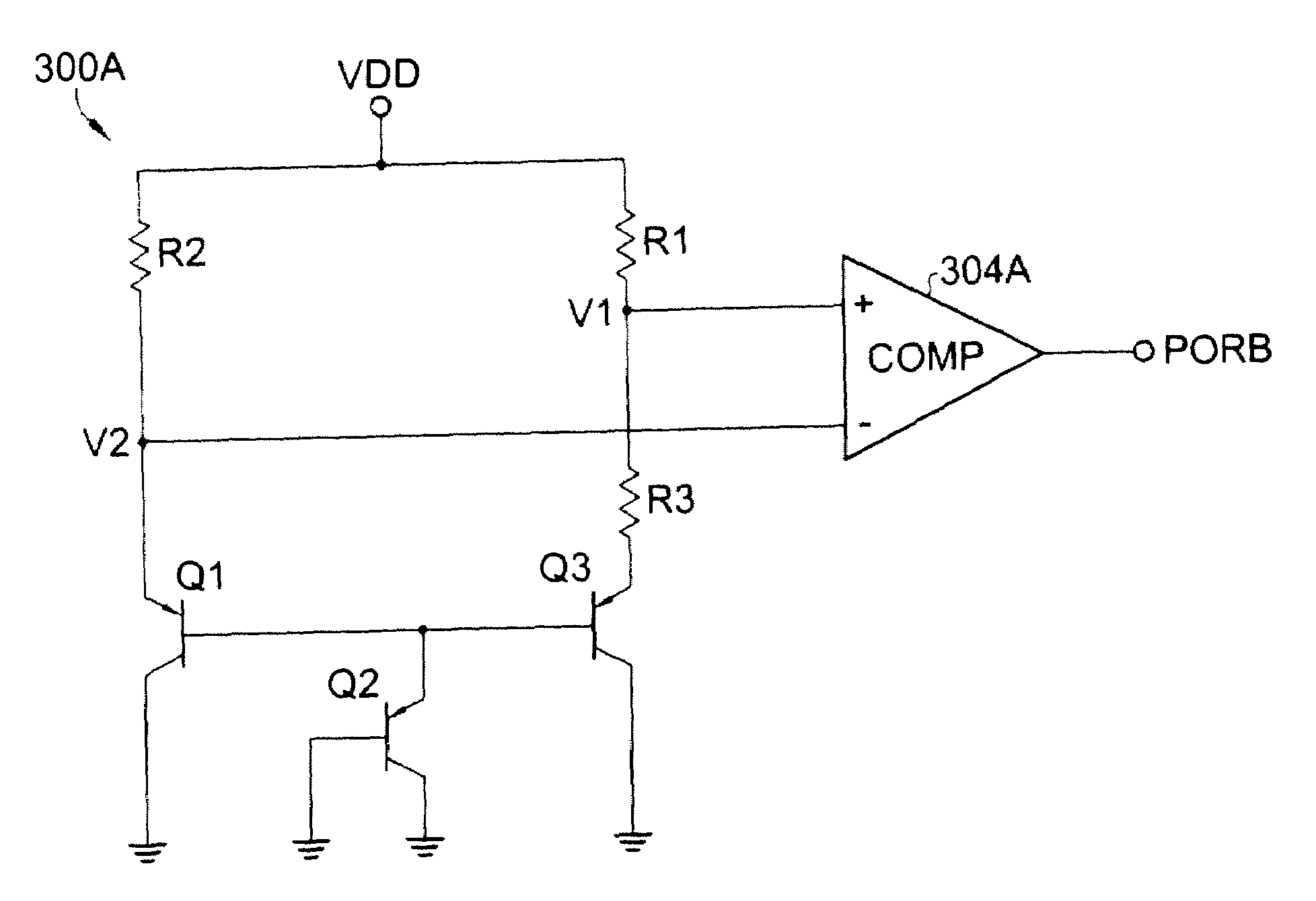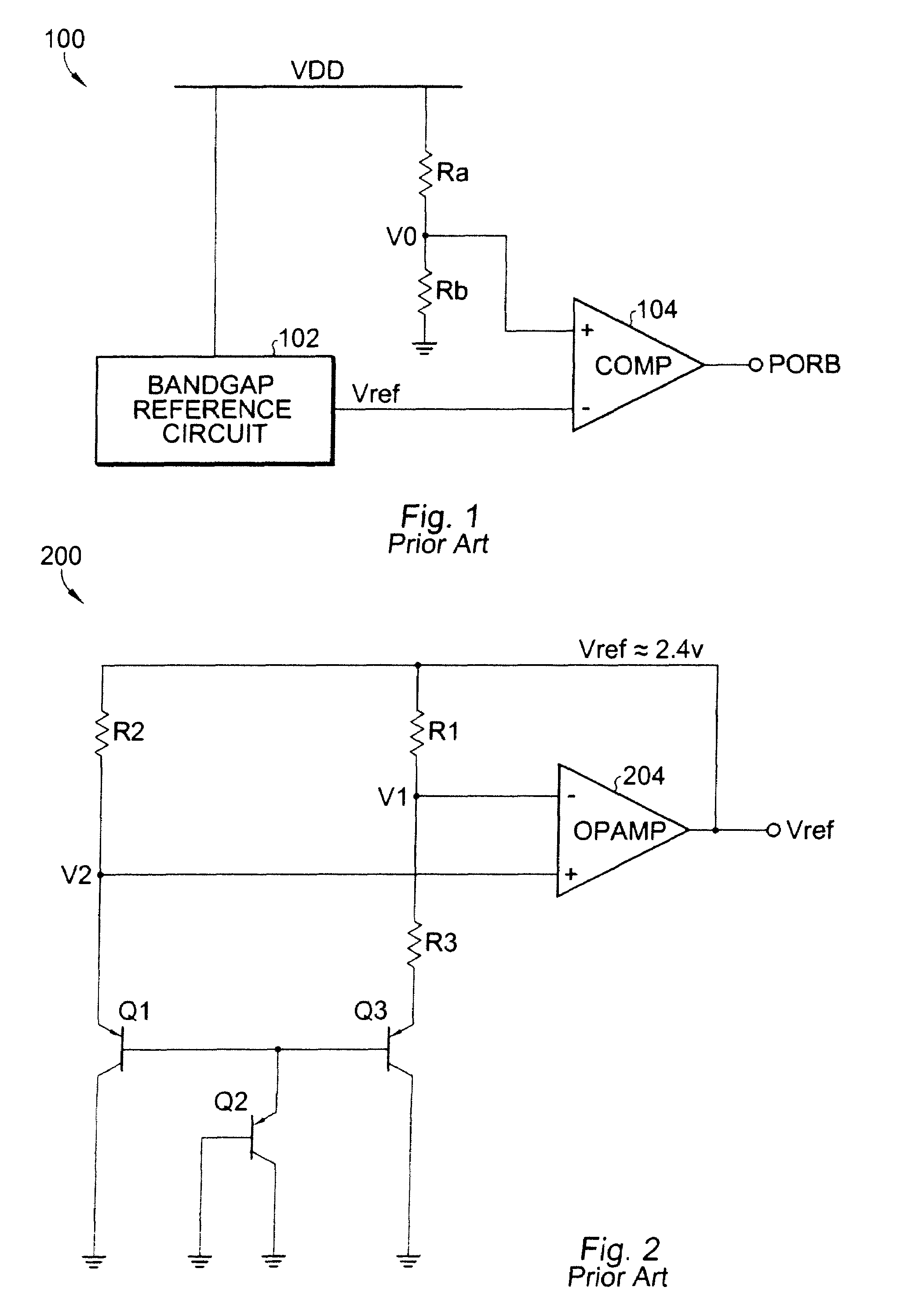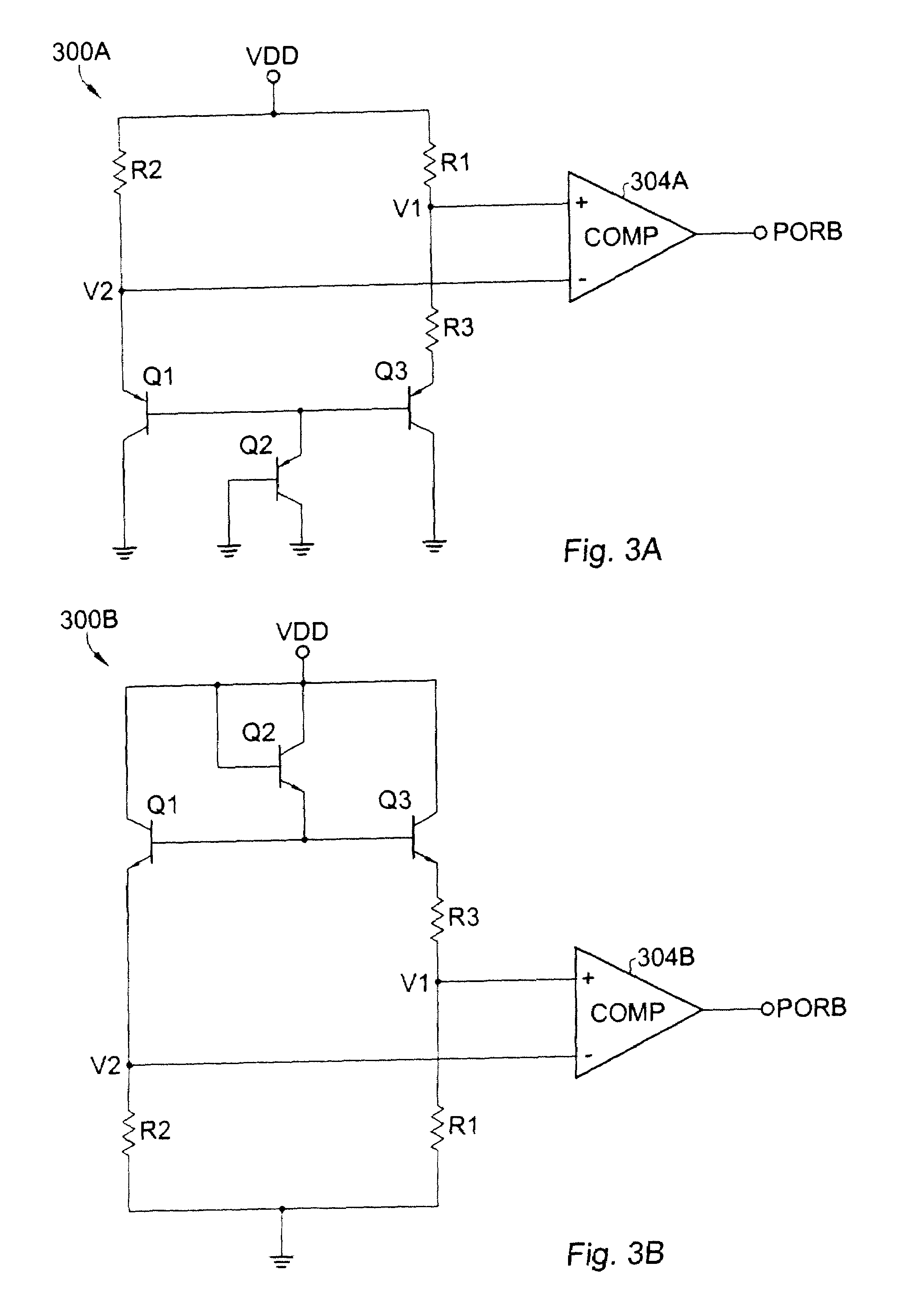Fast power-on detect circuit with accurate trip-points
a detection circuit and trip-point technology, applied in the field of fast power-on detection circuits, can solve the problems of poor trip-point accuracy, power detectors based on bandgap reference, and inability to meet the most speed requirements, etc., and achieve the effect of accurate trip-point, fast response, and narrow variation
- Summary
- Abstract
- Description
- Claims
- Application Information
AI Technical Summary
Benefits of technology
Problems solved by technology
Method used
Image
Examples
first embodiment
[0020]Referring now to FIG. 3A, a schematic diagram is shown of the power-on reset circuit 300A according to the present invention. Operational amplifier 204 from prior art FIG. 2 is replaced by a fast comparator 304A, and the “top nodes” of resistors R1 and R2 (which were previously coupled to the reference voltage Vref at the output of operational amplifier 204 in the bandgap reference circuit 200 in FIG. 2) are now tied to the power supply voltage VDD.
[0021]Power-on reset circuit 300A includes a first PNP transistor Q1 having an emitter, a base, and a collector coupled to ground; a second transistor Q2 having an emitter coupled to the base of the first transistor, and a base and collector coupled to ground; a third transistor Q3 having an emitter, a base coupled to the base of the first transistor, and a collector coupled to ground; a first resistor R1 coupled between the VDD power supply and an internal node; a second resistor R2 coupled between VDD and the emitter of the first ...
second embodiment
[0022]Referring now to FIG. 3B, the power-on reset circuit is shown according to the present invention. Power-on reset circuit 300B includes a first NPN transistor Q1 having an emitter, a base, and a collector coupled to VDD; a second transistor Q2 having an emitter coupled to the base of the first transistor, and a base and collector coupled to VDD; a third transistor Q3 having an emitter, a base coupled to the base of the first transistor, and a collector coupled to VDD; a first resistor R1 coupled between ground and an internal node; a second resistor R2 coupled between ground and the emitter of the first transistor; a third resistor R3 coupled between the internal node and the emitter of the third transistor; and a comparator 304B having a positive input coupled to the internal node and a negative input coupled to the emitter of the first transistor for generating a power-on reset signal PORB.
[0023]In circuit 300A shown in FIG. 3A, PNP diode-connected transistor Q2 can be replac...
PUM
 Login to View More
Login to View More Abstract
Description
Claims
Application Information
 Login to View More
Login to View More - R&D
- Intellectual Property
- Life Sciences
- Materials
- Tech Scout
- Unparalleled Data Quality
- Higher Quality Content
- 60% Fewer Hallucinations
Browse by: Latest US Patents, China's latest patents, Technical Efficacy Thesaurus, Application Domain, Technology Topic, Popular Technical Reports.
© 2025 PatSnap. All rights reserved.Legal|Privacy policy|Modern Slavery Act Transparency Statement|Sitemap|About US| Contact US: help@patsnap.com



